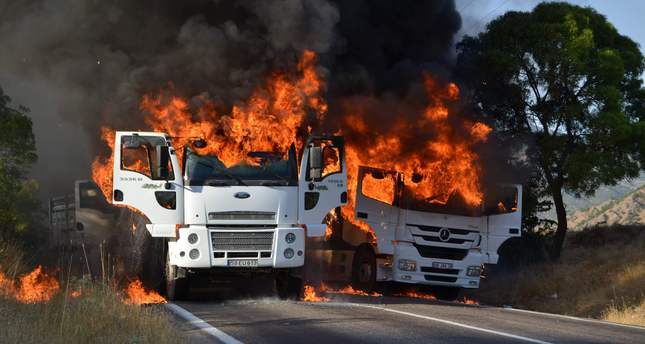PKK Strategies Against Civilians
DRK Snapshot
PKK Strategies Against Civilians
Overarching Considerations on PKK Targeting of Civilians
In 2017, 28% of PKK’s targets were related to the civilians. Even though the percentage is relatively small when compared to that of security forces (68%) targeted by PKK, civilians are likely to become more vulnerable against PKK attacks in the upcoming future, since intensive ongoing military operations are forcing PKK to shift its targeting strategies.
Who are Civilian People?
 There are mainly two types of civilians: foreigners and local people. Local people are composed of supporters of state/security forces, and others. The former has always become targets of PKK. The latter is occasionally targeted and also frequently exposed to collateral damage. Collateral damage has created unforeseen losses or damages for civilians. Yet, in some occasions, deliberate losses or damages can also be directed against civilians. Especially in 1990s, PKK, in order to create an atmosphere of fear and terror and to make people obey themselves, deliberately targeted civilians. Those years were marked with the inhumane attacks of PKK and pictures of dead babies in southeast regions of Turkey. This was the reason, Abdullah Öcalan, head of PKK, was given a nickname, “baby killer”.
There are mainly two types of civilians: foreigners and local people. Local people are composed of supporters of state/security forces, and others. The former has always become targets of PKK. The latter is occasionally targeted and also frequently exposed to collateral damage. Collateral damage has created unforeseen losses or damages for civilians. Yet, in some occasions, deliberate losses or damages can also be directed against civilians. Especially in 1990s, PKK, in order to create an atmosphere of fear and terror and to make people obey themselves, deliberately targeted civilians. Those years were marked with the inhumane attacks of PKK and pictures of dead babies in southeast regions of Turkey. This was the reason, Abdullah Öcalan, head of PKK, was given a nickname, “baby killer”.
PKK have executed people, not necessarily only the ones supportive of state to ensure their supremacy over the society. Though not being in a massive scale, such executions might be witnessed in the future due to the aforementioned reasons.
 There is also a third group of targeted civilians. This groups includes people working for the infrastructure projects that PKK regards as a restriction on its own military capability and maneuverability. These people (both managers and workers) are targeted and these companies’ assets are being destroyed. Targeting of such projects closely depends on the prominence of the projects, which might have the potential to cause troubles for PKK. On the other hand PKK considers an increase the level of education and the welfare of the society as a threat against its authority. That explains why PKK targets the road construction sites and schools along with the workers and teachers affiliated with them.
There is also a third group of targeted civilians. This groups includes people working for the infrastructure projects that PKK regards as a restriction on its own military capability and maneuverability. These people (both managers and workers) are targeted and these companies’ assets are being destroyed. Targeting of such projects closely depends on the prominence of the projects, which might have the potential to cause troubles for PKK. On the other hand PKK considers an increase the level of education and the welfare of the society as a threat against its authority. That explains why PKK targets the road construction sites and schools along with the workers and teachers affiliated with them.
Contrary to major opinion that “PKK might tolerate some projects in return for money/bribery“ DRK considers that this will never be a case for the major projects as described above. They may impose a tax-like payment on the projects which may be lesser degree disadvantageous for PKK. Nevertheless, it should not be disregarded that PKK is not a trustworthy organization and it is all composed of illegal armed people.
Foreigners are composing secondary group of civilians to be potentially targeted by PKK. 1990s had witnessed several incidents of kidnappings, almost all of which were ended with safe release of the victims. The primary aim of those adversities was to attract the support and attention of European countries.

Conclusion
Consequently for civilians, the issue of collateral damage is always likely to occur. However, considering periodical balance shifts, conjunctural fluctuations, adopted action plans and target specifications as well as time and space, potential risks might be significantly minimized or even eliminated through a professional security service, which is a niche capability that DRK provides.
